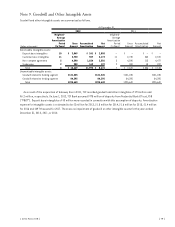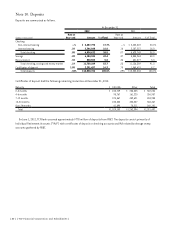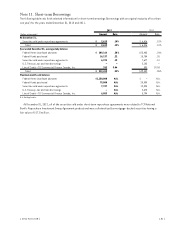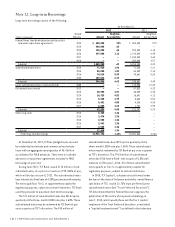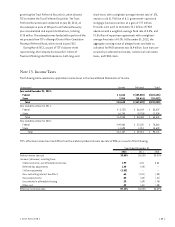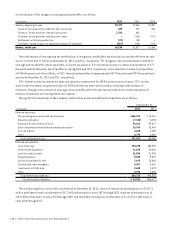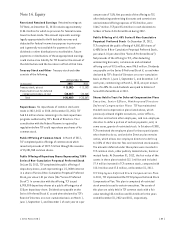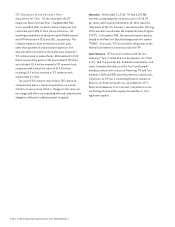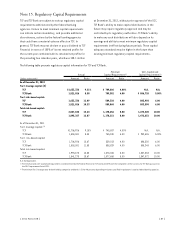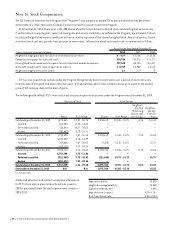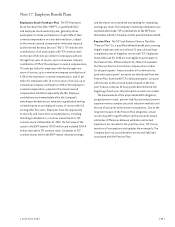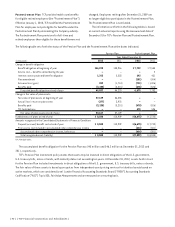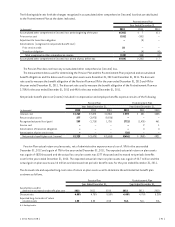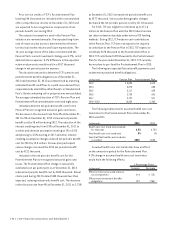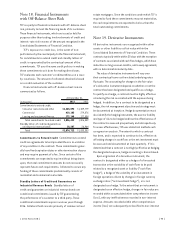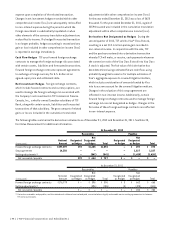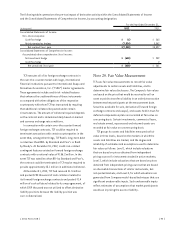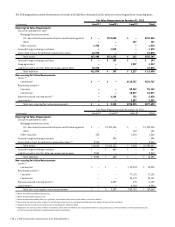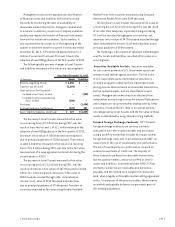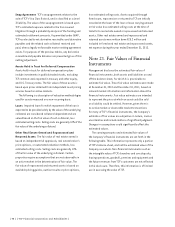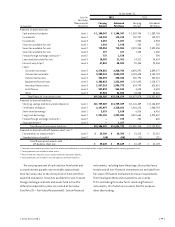TCF Bank 2012 Annual Report Download - page 105
Download and view the complete annual report
Please find page 105 of the 2012 TCF Bank annual report below. You can navigate through the pages in the report by either clicking on the pages listed below, or by using the keyword search tool below to find specific information within the annual report.Note 17. Employee Benefit Plans
Employees Stock Purchase Plan The TCF Employees
Stock Purchase Plan (the “ESPP”), a qualified 401(k)
and employee stock ownership plan, generally allows
participants to make contributions of up to 50% of their
covered compensation on a tax-deferred basis, subject
to the annual covered compensation limitation imposed
by the Internal Revenue Service (“IRS”). TCF matches the
contributions of all participants with TCF common stock
at the rate of 50 cents per dollar for employees with one
through four years of service, up to a maximum company
contribution of 3% of the employee’s covered compensation,
75 cents per dollar for employees with five through nine
years of service, up to a maximum company contribution of
4.5% of the employee’s covered compensation, and $1 per
dollar for employees with 10 or more years of service, up to
a maximum company contribution of 6% of the employee’s
covered compensation, subject to the annual covered
compensation limitation imposed by the IRS. Employee
contributions vest immediately while the Company’s
matching contributions are subject to a graduated vesting
schedule based on an employee’s years of service with full
vesting after five years. Employees have the opportunity
to diversify and invest their account balance, including
matching contributions, in various mutual funds or TCF
common stock. At December 31, 2012, the fair value of the
assets in the ESPP totaled $170.8 million and included $104.4
million invested in TCF common stock. Dividends on TCF
common shares held in the ESPP reduce retained earnings
and the shares are considered outstanding for computing
earnings per share. The Company’s matching contributions are
expensed when made. TCF’s contributions to the ESPP were
$8.0 million in 2012, $7.6 million in 2011 and $6.9 million in 2010.
Pension Plan The TCF Cash Balance Pension Plan (the
“Pension Plan”) is a qualified defined benefit plan covering
eligible employees who are at least 21 years old and have
completed a year of eligibility service with TCF. Employees
hired after June 30, 2004 are not eligible to participate in
the Pension Plan. Effective March 31, 2006, TCF amended
the Pension Plan to discontinue compensation credits
for all participants. Interest credits will continue to be
paid until participants’ accounts are distributed from the
Pension Plan. Each month TCF credits participants’ accounts
with interest on the account balance based on the five-
year Treasury rate plus 25 basis points determined at the
beginning of each year. All participant accounts are vested.
The measurement of the projected benefit obligation,
prepaid pension asset, pension liability and annual pension
expense involves complex actuarial valuation methods and
the use of actuarial and economic assumptions. Due to the
long-term nature of the Pension Plan obligation, actual
results may differ significantly from the actuarial-based
estimates. Differences between estimates and actual
experience are recorded in the year they arise. TCF closely
monitors all assumptions and updates them annually. The
Company does not consolidate the assets and liabilities
associated with the Pension Plan.
{ 2012 Form 10K } { 89 }


